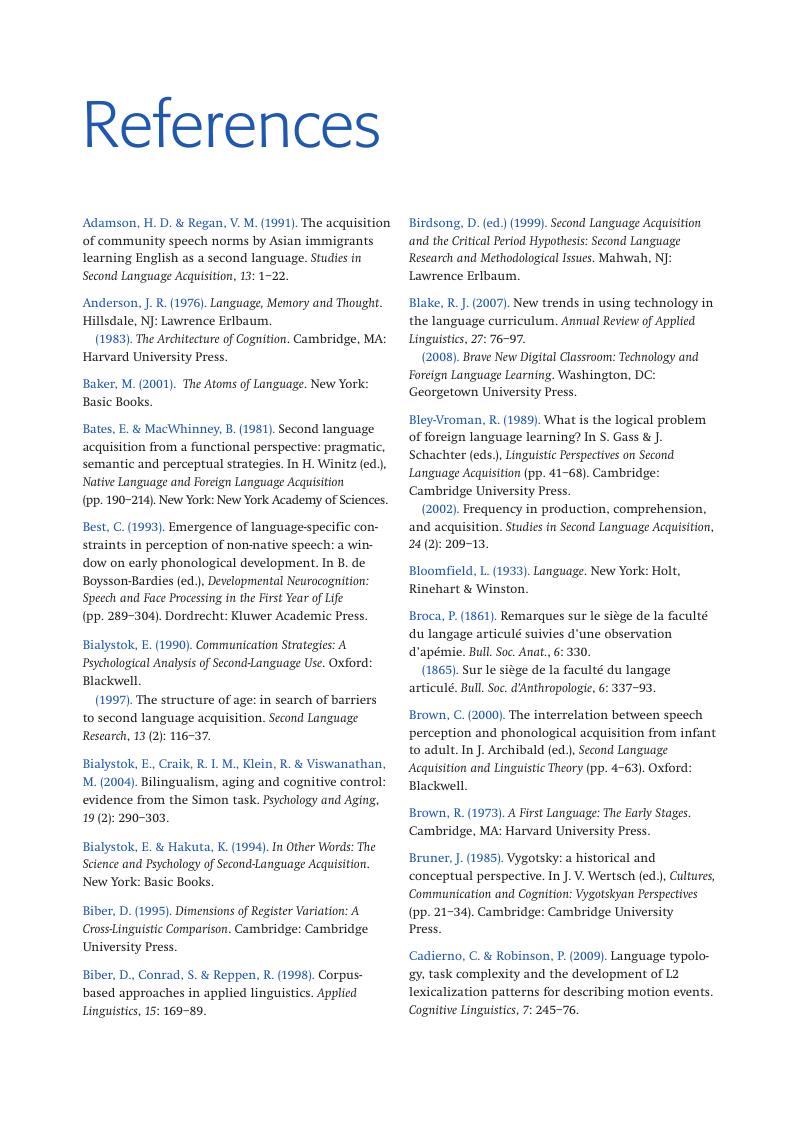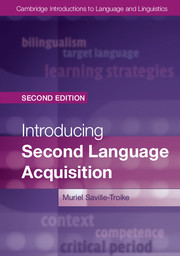Book contents
- Frontmatter
- Contents
- About the book
- Acknowledgments
- Chapter 1 Introducing Second Language Acquisition
- Chapter 2 Foundations of Second Language Acquisition
- Chapter 3 The linguistics of Second Language Acquisition
- Chapter 4 The Psychology of Second Language Acquisition
- Chapter 5 Social contexts of Second Language Acquisition
- Chapter 6 Acquiring knowledge for L2 use
- Chapter 7 L2 learning and teaching
- Answer guide to questions for self-study
- Glossary
- References
- Index
- References
References
- Frontmatter
- Contents
- About the book
- Acknowledgments
- Chapter 1 Introducing Second Language Acquisition
- Chapter 2 Foundations of Second Language Acquisition
- Chapter 3 The linguistics of Second Language Acquisition
- Chapter 4 The Psychology of Second Language Acquisition
- Chapter 5 Social contexts of Second Language Acquisition
- Chapter 6 Acquiring knowledge for L2 use
- Chapter 7 L2 learning and teaching
- Answer guide to questions for self-study
- Glossary
- References
- Index
- References
Summary

- Type
- Chapter
- Information
- Introducing Second Language Acquisition , pp. 207 - 216Publisher: Cambridge University PressPrint publication year: 2012



